What Is Rapid Prototyping? Methods, Materials, and Steps
 Nov 12,2025
Nov 12,2025

Rapid prototyping (RP) plays an essential role in the development and evaluation of CAD-assisted designs. With the help of various rapid prototyping techniques, manufacturers can now refine the product design without wasting time, material, and money used to evaluate the product after complete development of components.
That's why, for manufacturers, understanding rapid prototyping is necessary to test form, fit, and function of the product under real conditions. We are going to discuss this process and its relevant techniques that are effectively used in this process. If you really want a competitive edge in the manufacturing industry, adorn yourself with this knowledge and stay with us throughout this post.
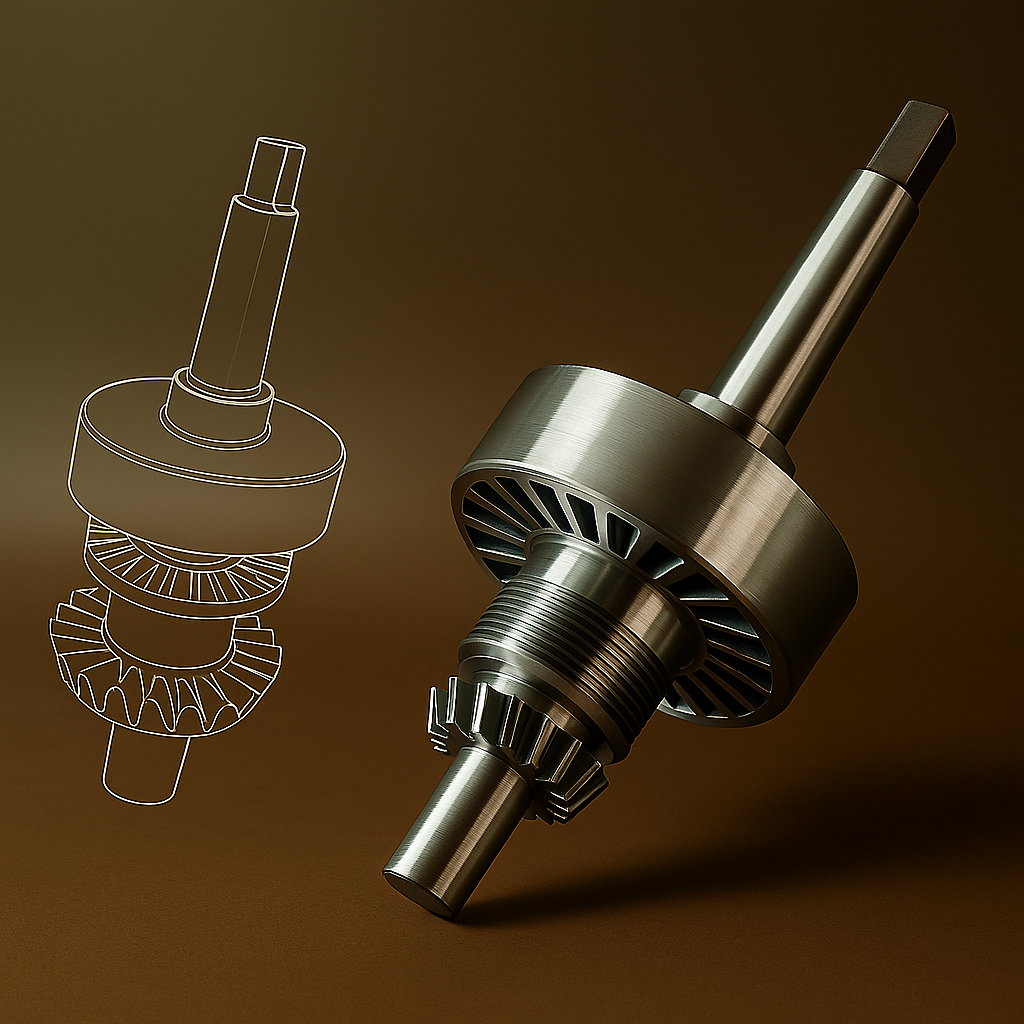
What Is Rapid Prototyping?
Rapid prototyping is considered an essential step in the early development of components. We can define RP in two ways:
How to Define Rapid Prototyping?
Rapid prototyping is the process of fabricating a component through various techniques using its computer-aided design (CAD). With the help of RP, the multiple iterations components are manufactured and tested to obtain the optimal design. CNC is the most used technique for producing components with this process.
What Is Rapid Prototyping in Design Thinking?
The design team builds a simple first version of a new product through rapid prototyping in product design. This first version is considered a minimum viable product (MVP) featuring the basics of the actual product. MVP is developed to show the customer and know their feedback on design. Engineers use fast tools such as CNC for fabrication in order to test many designs in a short period of time.
Rapid Prototyping vs. Traditional Prototyping
In traditional prototyping, engineers build temporary models of the components using traditional manual tolling and techniques such as MIM (Metal injection molding). Using these techniques was economically unfavorable and time-consuming. However, with rapid prototyping, variant designs of the components are built within a short time frame using their CAD models. These designs resemble with actual product closely in geometry, tolerance, and structure.
By using rapid prototyping, such as CNC designs, unique features and geometries can be developed that even an experienced engineer may not be able to create. Unlike prototyping with the help of rapid prototyping engineers can visualize the designs to find glitches before sending them to production.
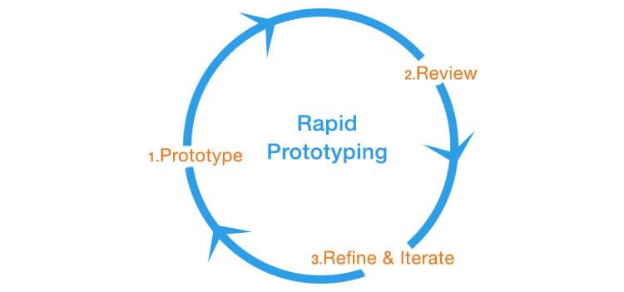
When to Use Rapid Prototyping?
After understanding what prototyping is, we will now know about the situations or steps where you can utilize this technique for more effective production.
Concept and Design Prototypes
Rapid prototyping is ideal during the early design phase to visualize concepts and evaluate designs before full-scale manufacturing.
Complex Geometry Prototype
Rapid prototyping is used when traditional prototyping is not capable of producing parts with complex geometries and high precision. In rapid prototyping technologies like CNC machining can help with such designs.
Lead-Time or Supply-Chain Delays
Rapid prototyping is highly effective for the quick production of functional components without compromising quality.
How Many Methods to Do Rapid Prototyping?
Understanding the various aspects of prototyping, such as component geometry, required strength, material compatibility, and the level of design flexibility needed, various methods are adopted for prototyping. Based on these multiple needs and applications, here we have outlined the most well-known methods and their practical use in the manufacturing industry.
CNC Machining
CNC (Computer Numerical Control) machining is a subtractive method used in RP. This process is adopted in prototyping because of its ability to develop components with exceptional surface finish qualities which merely require any secondary operation. Another reason making it suitable for this process is that it can machine a number of materials. These materials include: metals, plastics, ceramics, and composite materials. Basically, the bar or rod of such material is subjected to milling or turning.
The excess material is removed from the material bar to produce the required part, either a gear or a bearing. The process may involve 3-axis indexing or 5-axis indexing in milling for components with complex geometries, such as gear housings.
Additive Manufacturing
Additive manufacturing is another well-known technique used in rapid prototyping when components with complex geometries are required. The process includes sheet metal fabrication, such as brackets, enclosures, and EMI shields. There are multiple additive manufacturing processes that are adopted in RP, which build prototypes layer by layer through multiple ways, some of which are:
- Laser Powder Bed Fusion (LPBF): With the help of an LBF, engineers can develop complex components with high precision, such as internal channels and lattice structures. Although you can achieve tight tolerance with LPBF, you may need to subject the component to heat treatment and surface finishing to relieve stress and improve surface texture.
- Multi Jet Fusion (MJF): Another additive manufacturing technique that uses an inkjet array to fuse metal powder. It is used in manufacturing high-end prototypes with intricate features, including housings, clips, and assembly fixtures.
- Selective Laser Sintering(SLS): In this technique, high-power lasers are used for developing prototypes layer by layer with the help of CAD designs. This process is applied when parts require durability for mechanical testing or assembly trials.
Urethane Casting and Soft Tooling
This method uses silicone molds and urethane resins to create small-batch prototypes mimicking injection-molded parts. The process provides good surface finish, consistent dimensional accuracy, and material options that can simulate the behavior of ABS, polypropylene, or rubber-grade components.
Rapid Prototyping vs. 3D Printing
It is essential to understand the difference between RP and 3D printing, as 3D printing is just one subset of rapid prototyping. Whereas rapid prototyping involves many techniques, such as CNC machining, Additive manufacturing, urethane casting, and more.
CNC Machining for Rapid Prototypes
Since CNC machining is widely used in rapid prototyping, it is important to understand when its a better choice.
When CNC Is the Better Choice
CNC is considered an ideal choice when engineers need to prototype a simple metal component with a tight tolerance of about ±4 μm and high precision.
Components requiring high strength and superior mechanical properties are produced in large volumes through CNC.
When manufacturers need to validate the thermal and mechanical properties of the final components, the prototypes are manufactured using actual material through CNC machining.
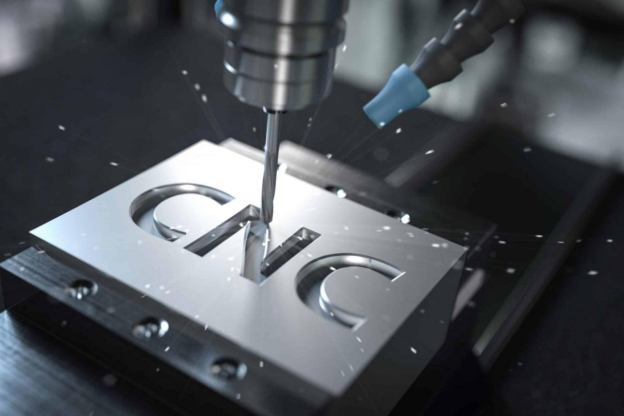
Main Advantages of CNC Machining
CNC machining offers numerous advantages in rapid prototyping, such as:
- Scalability: With the help of CNC machining, engineers can produce the required number of prototypes from small numbers to large-scale production with the same precision and accuracy.
- Design Flexibility: In CNC machining, engineers can easily alter the design of the prototype through computer software and produce the required geometry component. By using multi-axis milling, they can manufacture components with complex and intricate geometries as well.
- Versatility: By using CNC or prototyping, prototypes of multiple materials are developed, such as Aluminium, plastics, Delrin, and more. The material is selected based on the required thermal and mechanical properties.
- Accuracy: With CNC machining, highly accurate designed components are manufactured that meet tight dimensional tolerances.
- Fast Turnaround: Enables quick prototype delivery, especially when combined with digital CAD/CAM workflows.
- Superior Surface Finish: Produces smooth, high-quality surfaces suitable for operational testing or end-use parts.
Common Materials and Tolerances
CNC machining is a versatile technique for material selection. It can manufacture components using metals and plastics as well. The prototypes produced in aluminium and stainless steel exhibit higher tolerance than those produced in plastics such as Delrin. This is because of their rigidity and uniform structure, which provides precise dimensional control. Here we have summarised some of the most commonly used materials in prototyping through CNC machining:
|
Material Grade |
Key Material Properties |
|
Aluminum 6061‑T6 |
Good strength-to-weight ratio, excellent machinability, corrosion-resistant |
|
Aluminum 7075‑T6 |
High strength, moderate machinability |
|
Stainless Steel 304 |
Excellent corrosion resistance, good formability |
|
Stainless Steel 416 |
Free-machining grade, high strength, suitable for precision components |
|
Delrin (POM‑H) |
Low friction, high stiffness, remarkable dimensional stability |
|
PEEK (Polyether Ether Ketone) |
High temperature and chemical resistance, excellent mechanical performance, |
Machined Surface Finishes
CNC machining in rapid prototyping involves various surface finishing processes. Surface finish of a prototype is essential for its appearance and its workability; for example, a prototype with a smoother surface finish will show less friction compared to a matte finish. These are selected depending upon the required surface properties. Here are some surface finishes:
- Bead Blasting
Prototypes requiring a mate or non-reflective surface finish are subjected to bead blasting. In this process, the uniform tiny balls are blasted over the surface to enhance the visual appearance.
- As Machined Finish
Machined surface finishes which have minor tolling marks with a standard surface roughness (Ra) of about 3.2 μm.
- Anodizing
Anodizing is preferred for those components that are at high risk of corrosion during operation. Here, the surface may be subjected to coating, dyeing, or colouring.
- Polished Finish
Such surface finish is achieved by mechanical polishing, buffing, or chemical polishing. It produces a mirror-like, high-gloss surface on the components requiring a sleek look.
Tips for Better DFM Prototypes
Here are some tips for better design for manufacturing(DFM) prototypes in CNC machining when designing parts:
Limit Critical Tolerances: In order to reduce setup time and overall cost of machining, only specify tight tolerances where necessary.
Accommodate a Center: For parts longer than 4× their diameter, design for a live or saddle center to stabilize the part during turning.
Minimize Non-Round Features: Restrict perpendicular or irregular features unless essential. Because of such designs, a multi-axis setup will be used, which will increase cost and lead time.
Clearly Call Out Undercuts: Specify which undercuts are essential for functionality. This will avoid unnecessary machining and confusion.
CNC Machining vs. Other Manufacturing Methods
When it comes to rapid prototyping methods, it involves techniques not only CNC but also 3D printing, Injection molding, and sheet metal fabrication. Here we will compare these techniques with CNC, so it will be easy to decide which one to go with. However, an accurate quotation is based on technical drawings and more details related to components.
CNC vs 3D Printing
|
Aspect |
CNC Machining |
3D Printing |
|
Process |
Subtractive (removes material from solid blocks) |
Additive (builds parts layer by layer) |
|
Materials |
Metals, rigid plastics, composites, ceramics |
Plastics, resins, powdered metals, and some composites |
|
Design Freedom |
Moderate: complex shapes possible |
High: supports complex geometries, |
|
Tolerance & Accuracy |
High: ±0.005″ (±0.13 mm) typical |
Moderate: ±0.1–0.3 mm; Z-axis less consistent |
|
Surface Finish |
Excellent: 0.4–3.2 µm Ra |
Variable; often requires post-processing |
|
Production Speed |
Faster for batch production; setup required |
Faster for one-off prototypes; slower for batches |
|
Cost |
Medium–high for single parts; decreases with volume |
Low–medium for single parts; less sensitive to volume |
CNC vs Injection Molding
To maintain flexibility, cost, and manufacturing speed, it is essential to know the prototyping method. Should you select CNC or Injection molding? Here are some key points to help you make a wise decision.
CNC does not require any mold; it is a subtractive technique that builds components directly from bar or rod, making it suitable and adequate for design development steps in prototyping. However, Injection molding requires typical molds for production, which are not only costly but also time-consuming.
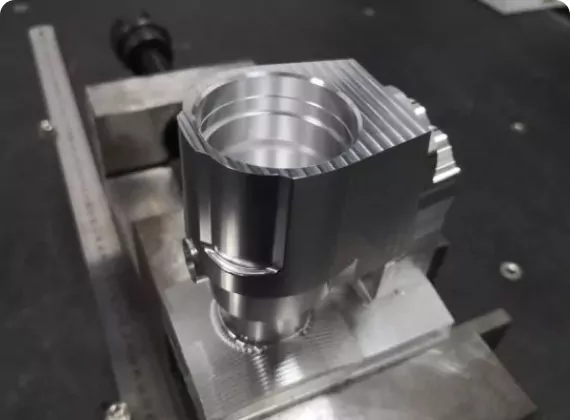
Another important factor in contracting these two methods is precision and tolerance. CNC can produce components with a tight tolerance of about ±0.001 inches. At the same time, injection molding is about±0.003 inches because of material shrinkage during the cooling process.
CNC vs Sheet Metal Fabrication
In sheet metal fabrication, it is typically an additive process where metal sheets are subjected to cutting, milling, and forming to obtain the required components. Where in CNC, the bar is subjected to turning or milling to obtain the required prototype. CNC can be applied to a number of materials, including plastic, metals, or ceramics, whereas sheet metal welding can utilize metal sheets only.
Sheet metal fabrication involves a number of steps, which makes it time consuming compared to CNC, which involves automated steps.
Cost-effectiveness of these techniques depends on volume. For example, for simple parts in large quantities, sheet metal fabrication can be economical. However, CNC machining provides greater flexibility and speed for prototypes and small-batch production.
How to Select Materials for Prototyping
It is essential to select the right material for rapid prototyping to ensure the prototype accurately reflects the intended performance of the final product. Don't let your prototype waste select material according to the requirements. For your ease here, we have compiled essential information to make a wise decision:
Design Purposes
Focus on the specific working of the component and select the material based on required strength and mechanical properties. As each part’s design purpose dictates the material requirements, including strength, stiffness, wear resistance, and machinability,
Engineering Plastics
High-performance plastics are considered suitable for CNC machining and functional prototypes. For example if components is subjected to bear high temperature select PEEK and for more smooth surface finish and frictionless sliding you can go with POM (Delrin), and Nylon
Metals for Prototyping
Different metals are used in rapid prototyping for components that require high strength, dimensional stability, and heat resistance. Some common metals including:
- Aluminum (6061 and 7075)
- Stainless Steel( 304 and 316)
- Steel Grades (1018 and 4140)
Titanium Grades: Titanium is considered the best choice when high strength-to-weight ratio, excellent corrosion resistance, and lower machinability than aluminum or steel are required.
Ceramics and Composites
Ceramics are selected when high hardness, wear resistance, and thermal stability are important in prototyping. Whereas two or more materials are combined to form composites to achieve the desired properties, such as Alumina (Al₂O₃) for wear-resistant components such as for grinding tools or zirconia (ZrO₂) for high-temperature applications.
What Are The Limitations of Rapid Prototyping?
All manufacturing processes come with their own advantages and drawbacks, and so does rapid prototyping.
Benefits of Rapid Prototyping
Faster Design and Feedback
RP paves the way towards fast iteration of components to get instant feedback of customers. You can personalize the design based on the prototype features and redesigning can be done in initial stages.
Lower Costs
Costly manufacturing revisions in mass production are prevented through rapid prototyping. Because of its ability to identify flaws in early design stages.
Improved Design Accuracy and Quality
With the help of this technique engineers can build high-quality designs. Because it allows them to modify the design in CAD instead of building whole new components.
Material and Performance Evaluation
It enables the manufacturers to run experiments by building prototypes using different materials to check their performance under real-world conditions.
Lower Material Waste
Most of the RP methods, such as additive manufacturing, produce less waste compared to traditional prototyping techniques. This makes RP a more sustainable choice.
Companies like TOUFA, which utilizes rapid prototyping, have a competitive edge in the market to bring the design to fundamental components in a short period of time compared to other manufacturers.
Limitations of Rapid Prototyping
Small Batch vs. Large Batch Cost
One of the remarkable limitations of rapid prototyping is its cost per part in small-batch prototype manufacturing. This is because of the setup, tooling, and programming expenses. This makes it challenging for startups and small firms to find cost-effective suppliers for limited runs.
Time Consumption
In the RP process, the cost of the prototype production usually increases with the complexity of the component geometry. Because prototypes involving intricate geometries or multiple machining setups require longer lead times, reducing overall efficiency in rapid development cycles.
What Are Steps in Rapid Prototyping Workflow?
So you might have a question in mind, How to do rapid prototyping? This method actually follows a complete structural flow of steps from conceptualizing a design to building in the lab with the realistic features. Here is a detailed explanation of how this is performed.
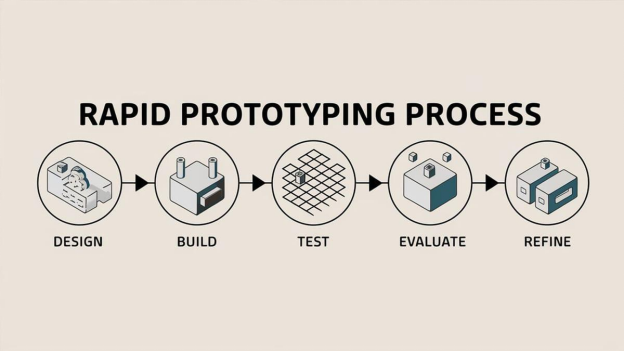
1. Define Requirements
Start by clearly identifying or setting the requirements of the components. Clarify the required:
- Geometry
- Features
- Diameter
- Complexity
- Strength
- Mechanical properties of the component.
2. Select Prototyping Method
Now, based on the requirements, engineers select a prototyping method that can be used for developing the required part. Here they consider the rest of the parameters such as time cost and efficacy.
You can demand quotes for different manufacturing methods from the company. For example, if you contact TOUFA, you can ask them to send you quotes for various methods to develop the prototype of your required component.
3. Choose Prototyping Materials
When you have finalized the method, it is time to decide on the material based on the required properties and feasibility. You can also take advice from the expert team of engineers at TUOFA. They will recommend the best possible options. You can choose from metal, ceramics, or plastic-based material for your component development.
4. Build 2D&3D CAD
Here engineers and designers will work collaboratively to generate accurate 2D engineering drawings and 3D CAD designs. These models will reflect final part’s:
- Geometry
- Tolerances
- Surface finish
- Assembly interfaces.
These 3D CAD drawings are considered essential for quotation, tooling simulation, and manufacturing planning.
5. Prepare Manufacturing Files
After building the CAD model now it's now time to prepare a manufacturing file containing all necessary requirements for proper manufacture without any errors. These files are in formats such as STL, STEP, or native CAD, specifically based on the supplier’s requirements.
6. Seeking a Suitable Manufacturer
Now that you have CAD designs of your component, you can evaluate different manufacturers based on multiple aspects:
- Evaluate based on:
- Material range capability
- Lead time and quoting transparency
- Machine accuracy and inspection equipment
- Previous functional prototype experience
7. Fabricate the Prototype
After all these steps, when you finalize a manufacture, their engineers will now work to fabricate the components using the finalized technique, such as CNC machining or Additive manufacturing.
8. Post-Process and Finish
When the prototype is manufactured based on the surface mechanical and physical properties, the components are subjected to post-processing. It may involve anodizing, polishing, blasting, or powder coating.
9. Inspect and Measure
It's time to inspect the essential properties like dimensions, tolerances, and specified finishes using CMM, optical, and surface roughness gauge. Manufacturers like TOUFA offer inspection services as part of their one-stop solution.
10. Functional Test
Finally the prototype is subjected to testing under real conditions. Its performance is checked through corrosion test, humidity test, load and temperature bearing test. These tests help ensure that components produced will be up to the mark or requirements.
11. From Prototype to Production
Here are some tips about how to go from prototype to production:
|
Tips |
Action |
Outcome |
|
Verify Prototype |
Confirm prototype meets all functional and dimensional requirements |
Ready for production, reduces revisions |
|
Simplify Geometry |
Remove unnecessary complexity based on test feedback |
Easier manufacturing, less material waste |
|
Adjust Tolerances |
Balance quality with machining cost |
Efficient production without compromising performance |
|
Select Production Method |
Choose processes suitable for high-volume output |
Scalable, consistent, and efficient |
|
Define Quality Controls |
Set inspection and testing criteria |
Ensures reliability and consistency |
|
Confirm Supplier Readiness |
Verify capacity, lead times, and logistics |
Smooth production transition, avoids delays |
|
Review Cost and Schedule |
Reassess unit cost, tooling, and timelines |
Economically feasible and on-time production |
Conclusion
In short, rapid prototyping is a key step in the development of components in various industries, including automotives, aerospace, and engineering. With the proper prototyping method, you can ensure faster development, accurate performance testing, and a smoother transition to full-scale production. At TUOFA, we provide one-stop custom prototyping solutions to support your project at every step. So, without any delay, you can request the quote today.
FAQs
How long does rapid prototyping take?
Rapid prototyping can take from a day to a few weeks. The time frame of this process depends on complexity of the geometry of required design, material, and changes needed in the design.
 Tel/WeChat:
Tel/WeChat:  Email:
Email: 
 Home
Home
 Machinist Tools in Machining: The Must-Have List for Beginners
Machinist Tools in Machining: The Must-Have List for Beginners 







